This article is part of our NFL Draft series.
The goal here is to find matches between draft capital and team need, focusing on the positions we care about most for fantasy football (QB/RB/WR/TE) to identify realistic options for each franchise. This week it's the NFC's turn, after the AFC was covered last week.
NFC East
 Philadelphia Eagles
Philadelphia Eagles
Biggest Need: Wide Receiver
The Match: The Eagles have a deep threat (DeSean Jackson), a big possession receiver (Alshon Jeffery), a slot guy (Greg Ward) and a young second-round pick (J.J. Arcega-Whiteside). Their WR corps isn't quite as bad as the Philly media likes to suggest, but it also isn't especially good, nor is it likely to get anything close to 64 combined games (16 x 4) from the aforementioned players in 2020. With Zach Ertz, Dallas Goedert and Miles Sanders accounting for the majority of short targets, the Eagles should prioritize deep/intermediate prowess when drafting wide receivers. Most mock drafts have the Eagles addressing this weakness in Round 1, but I actually think they can get away with waiting until Day 2, as the 2020 draft's impressive depth at the position should leave some good WR talent on the board at No. 53 overall. Candidates include TCU's Jalen Reagor, Notre Dame's Chase Claypool, Clemson's Tee Higgins and ASU's Brandon Aiyuk.
Other Options: The Eagles would be wise to select a second WR at some point in this draft, but they could also use a power
The goal here is to find matches between draft capital and team need, focusing on the positions we care about most for fantasy football (QB/RB/WR/TE) to identify realistic options for each franchise. This week it's the NFC's turn, after the AFC was covered last week.
NFC East
 Philadelphia Eagles
Philadelphia Eagles
Biggest Need: Wide Receiver
The Match: The Eagles have a deep threat (DeSean Jackson), a big possession receiver (Alshon Jeffery), a slot guy (Greg Ward) and a young second-round pick (J.J. Arcega-Whiteside). Their WR corps isn't quite as bad as the Philly media likes to suggest, but it also isn't especially good, nor is it likely to get anything close to 64 combined games (16 x 4) from the aforementioned players in 2020. With Zach Ertz, Dallas Goedert and Miles Sanders accounting for the majority of short targets, the Eagles should prioritize deep/intermediate prowess when drafting wide receivers. Most mock drafts have the Eagles addressing this weakness in Round 1, but I actually think they can get away with waiting until Day 2, as the 2020 draft's impressive depth at the position should leave some good WR talent on the board at No. 53 overall. Candidates include TCU's Jalen Reagor, Notre Dame's Chase Claypool, Clemson's Tee Higgins and ASU's Brandon Aiyuk.
Other Options: The Eagles would be wise to select a second WR at some point in this draft, but they could also use a power back to complement Miles Sanders and Boston Scott. The flashy choice would be Boston College behemoth AJ Dillon at some point on Day 2, while the discount option could be Utah's Zack Moss toward the end of Day 2 or the early part of Day 3.
 Dallas Cowboys
Dallas Cowboys
Biggest Need: Slot Receiver
The Match: The Cowboys are left without a clear choice for slot work after Randall Cobb bolted for Houston. It would be less of an issue if they had a stud fullback and/or impressive TE depth... unfortunately, neither of those things is true. I'm not sure if it will require a second-round pick or a third-rounder, but the Cowboys would have a scary offense if they drafted Penn State WR KJ Hamler or Texas WR Devin Duvernay — both guys can beat a defense deep from the slot.
Other Options: The Cowboys recently gave Blake Jarwin a four-year contract, one that reportedly is worth up to $24.5 million but only has $6.25 million guaranteed. Essentially, they're giving him a shot to replace Jason Witten, without committing to it beyond 2020. Given that 2018 fourth-round pick Dalton Schultz has been invisible through two seasons, the Cowboys likely will add another TE at some point during the upcoming draft. Virginia Tech's Dalton Keene finished his college career with only 748 yards, but he's built up buzz since showing three-down potential with a 4.71 40-yard dash at 254 pounds during the combine. I'm not sure he'll make it to Day 3, but if he does, he'd be a great fit for Dallas at No. 123 overall in the fourth round.
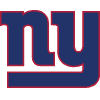 New York Giants
New York Giants
Biggest Need: Nothing?
The Match: The Giants are in good shape at every skill position, starting Saquon Barkley, Evan Engram, Sterling Shepard, Darius Slayton and Golden Tate. Meanwhile, the offensive line appears mediocre and the defense subpar, so I don't think we'll see Big Blue take a QB, RB, WR or TE before Day 3.
Other Options: None of Dion Lewis, Wayne Gallman or Jon Hilliman inspires confidence, so the Giants could look for backfield depth at some point on Day 3, choosing from the likes of ASU's Eno Benjamin and UCLA's Joshua Kelley.
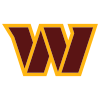 Washington Redskins
Washington Redskins
Biggest Need: Tight End
The Match: With Jeremy Sprinkle, Logan Thomas and Richard Rodgers currently atop the depth chart, Washington arguably has the worst TE group in the league. Missouri's Albert Okwuegbunam is the best athlete at the position in the 2020 class, having run a 4.49 40-yard dash at 6-foot-5, 258 pounds. He was limited to 1,187 yards in three collegiate seasons, but he did score 23 times on 98 catches and averaged 12.1 yards per reception despite having so many of his plays cut short by the end zone. Washington doesn't have a second-round pick and would be lucky to see Okwuegbunam on the board at No. 66 overall, but a trade or two would solve the problem.
Other Options: With Terry McLaurin looking like a true No. 1 and Steven Sims flashing potential in the slot, Washington could benefit from a better version of Kelvin Harmon to compete with Harmon for a starting job. Oregon State's Isaiah Hodgins fits the Harmon profile — a big WR with impressive production but a poor 40 time (4.61 for Hodgins, 4.60 for Harmon). Then again, I'm not really sure if it would be an upgrade or just a duplicate.
NFC North
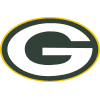 Green Bay Packers
Green Bay Packers
Biggest Need: Tight End
The Match: The Packers seem optimistic about 2019 third-round pick Jace Sternberger, who barely saw the field as a rookie even as Jimmy Graham bumbled his way through another useless campaign. Maybe GM Brian Gutekunst truly believes in Sternberger, or maybe he'll use his second-round pick on a tight end with three-down potential — someone like Notre Dame's Cole Kmet or Dayton's Adam Trautman.
Other Options: The Packers have a bunch of plus-sized wideouts but don't have a smaller, quicker guy for the slot. Granted, Davante Adams more than holds his own when he shifts inside, so it's not like the team needs a slot-specific guy for three-wide sets. Consider it a luxury more so than a need, which could match up with a Day 3 pick used on Miami's Jeff Thomas or SMU's James Proche. (I also think there's a decent chance the Packers go WR much earlier, considering Allen Lazard and Devin Funchess don't inspire a ton of confidence.)
 Minnesota Vikings
Minnesota Vikings
Biggest Need: Wide Receiver
The Match: The bad news? No Stefon Diggs. The good news? Two picks in the first round, and 12 selections overall. With Adam Thielen dominating on short and intermediate routes, the Vikings should target a physical specimen like Baylor's Denzel Mims, whose 4.38 speed would open things up underneath for Thielen and Co.
Other Options: The Vikings go two-deep in the backfield with Dalvin Cook and Alexander Mattison, and they're also two-deep at tight end with Kyle Rudolph and Irv Smith (not necessarily in that order). Drafting multiple WRs makes more sense than adding to those other positions, but they could also use an upgrade on backup QB Sean Mannion. How about Washington's Jacob Eason as a mid-round pick?
 Chicago Bears
Chicago Bears
Biggest Need: Wide Receiver
The Match: With Allen Robinson gobbling up targets and Anthony Miller flashing potential in the slot, the Bears could use a big-play threat to replace offseason cap casualty Taylor Gabriel. The Bears don't have selections in the first, third or fourth rounds, but they do hold Nos. 43 and 50 in the second round. Notre Dame's Chase Claypool is a size/speed freak who could help the team immediately if he isn't tasked with a large target count.
Other Options: Their quarterbacks and tight ends all stink, but the Bears have invested a ton of resources into both positions, and I don't think they're ready to admit failure in either case. Maybe we see them use a late-round pick on a TE prospect like Portland State's Charlie Taumoepeau or Oregon's Jacob Breeland.
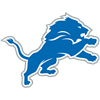 Detroit Lions
Detroit Lions
Biggest Need: Backfield Depth
The Match: The Lions are a bit like the Giants, with clear choices for the starting lineup at every skill position but a number of holes elsewhere on the roster. One big difference is that the Lions have Kerryon Johnson in the backfield instead of three-down workhorse Saquon Barkley, so it might make sense to go RB as soon as the third or fourth round. Let's go with Vanderbilt's Ke'Shawn Vaughn, a guy who had two seasons of prolific production but then put up mediocre numbers at the combine (4.51 40-yard dash, 117-inch broad jump). While he doesn't look like anything special, Vaughn could at least challenge Ty Johnson and Bo Scarbrough for the No. 2 RB job.
Other Options: Marvin Jones is 30 years old, and Danny Amendola is 34. A developmental WR prospect — maybe Liberty's Antonio Gandy-Golden or Southern Mississippi's Quez Watkins — would be a nice choice for the late part of Day 2 or early part of Day 3.
NFC West
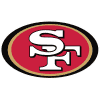 San Francisco 49ers
San Francisco 49ers
Biggest Need: Wide Receiver
The Match: The 49ers haven't signed a replacement for Emmanuel Sanders and don't seem to have much confidence in any of Dante Pettis, Marquise Goodwin (knee), Trent Taylor (foot), Richie James, Jalen Hurd (back) or Travis Benjamin. They essentially have Deebo Samuel and slot man Kendrick Bourne, plus a huge collection of guys that are fun as fourth or fifth receivers but overtasked as starters. With the DeForest Buckner trade bringing in the 13th overall pick, San Francisco should have its choice between the likes of Alabama WR Henry Ruggs, Baylor WR Denzel Mims and LSU WR Justin Jefferson. The team already has Samuel and George Kittle gobbling up short targets, so the priority will be a WR that can threaten defenses beyond the chains and beyond the back line.
Other Options: The Niners don't necessarily need to use pick No. 13 to fill their need at wide receiver, but it is worth noting that they don't have any selections between 31st and 157th overall. A trade could remedy the situation easily enough, or the Niners could stand pat and see which WRs are available at No. 31 if they pass at No. 13. Wideouts with deep speed available in that range might include Mims, Jefferson, TCU's Jalen Reagor and Notre Dame's Chase Claypool.
 Seattle Seahawks
Seattle Seahawks
Biggest Need: Running Back
The Match: Even if Chris Carson meets the Seahawks' expectation of recovering from a hip fracture without undergoing surgery, his savage running style hints at a limited lifespan as an NFL workhorse. Meanwhile, 2018 first-round pick Rashaad Penny is a strong candidate to open 2020 on the PUP list, working his way back from a December knee injury that involved an ACL tear and other ligament damage. Picking at Nos. 59 and 64 in the second round, Seattle could take a look at LSU's Clyde Edwards-Helaire or FSU's Cam Akers. If nothing else, either rookie could replace Carson on passing downs, sprinkling in a handful of carries and a few targets per week.
Other Options: It wouldn't hurt to add a young TE, or a WR to challenge Phillip Dorsett for the No. 3 job, but backup QB is the more obvious need. While the Seahawks barely use Russell Wilson as a runner anymore, it's still convenient for the offense to have a QB that poses enough of a ground threat to force defenders to respect the keeper option on zone-read plays. Colorado's Steven Montez is a late-round QB prospect who didn't do a ton of running in college but did put up a 4.68 40-yard dash at 6-foot-4, 231 pounds.
 Los Angeles Rams
Los Angeles Rams
Biggest Need: Running Back
The Match: Darrell Henderson is promising but unproven, while Malcolm Brown is the definition of mediocre. With no first-round pick and a variety of other needs, the Rams can address their backfield in the third round (Nos. 84, 104) or fourth round (Nos. 126), looking for a guy that can catch passes and thrive on outside-zone runs. Utah's Zack Moss is a nice fit, coming off a senior season with 235-1,415-15 on the ground and 28-388-2 through the air. A 4.65 40 time isn't optimal, but it's an acceptable result for a 5-foot-9, 223-pound bowling bowl.
Other Options: Brandin Cooks is on the trade block and Josh Reynolds has been disappointing in his multiple chances to join the starting lineup. A burner to go with Cooper Kupp and Robert Woods would be nice, though it probably isn't a priority relative to holes along the offensive line and defense. Quez Watkins out of Southern Miss and John Hightower from Boise State are interesting Day 3 options to give the Rams offense some deep speed.
 Arizona Cardinals
Arizona Cardinals
Biggest Need: Tight End
The Match: Kliff Kingsbury's use of four-wide formations makes tight ends less of a priority, but the position did account for 990 cumulative snaps on 1,049 team offensive snaps in 2019, as the Cardinals shifted toward three-WR sets after September. Maxx Williams did solid blocking work and even added a few catches on his 488 plays, but free agent Charles Clay leaves 396 lower-quality snaps behind, while the bottom of the depth chart holds Dan Arnold and Darrell Daniels. The Cardinals would benefit from a mid-round that can battle Arnold for TE snaps on passing downs; a group that potentially includes Washington's Hunter Bryant, LSU's Thaddeus Moss, Purdue's Brycen Hopkins and Portland State's Charlie Taumoepeau.
Other Options: The Cardinals only have Chase Edmonds and D.J. Foster behind Kenyan Drake, so they'll need to add warm bodies, if nothing else, to the backfield. I'm not sure if that means legitimate competition for Edmonds or just a No. 3 back, but I do think Kingsbury will prioritize pass-catching potential, which would favor quicker, smaller backs like Maryland's Anthony McFarland and Lousiana-Lafayette's Raymond Calais.
(h/t to Mario Puig for helping me with this section).
NFC South
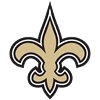 New Orleans Saints
New Orleans Saints
Biggest Need: None
The Match: This draft is loaded with wide receivers, so it wouldn't be out of the question for a mid-round pick to challenge Tre'Quan Smith for snaps. With Michael Thomas and Emmanuel Sanders likely accounting for all the slot work, New Orleans should look for a speedy outside WR if it decides to address the position. The guys I mentioned for the Rams also work well here: Boise State's John Hightower and Southern Miss's Quez Watkins.
Other Options: This team is stacked, especially on offense. "Best player available" has become a cliché, but this is the BPA situation if ever there was one. Maybe that proverbial best player happens to be a quarterback who can challenge Taysom Hill's potential succession to the Brees throne? Let's make it fun and go with Oklahoma's Jalen Hurts, who seems to show up anywhere between Rounds 1 and 4 in mock drafts. I'll also note that the Saints could use young tight end behind Jared Cook and Josh Hill.
 Tampa Bay Buccaneers
Tampa Bay Buccaneers
Biggest Need: Running Back
The Match: A team with Tom Brady, Chris Godwin and Mike Evans can probably get away with splitting backfield work between Ronald Jones and Dare Ogunbowale. But there's a difference between what you can do and what you should do, and in this case what the Bucs should do is use the 45th overall pick on Ohio State's J.K. Dobbins or Georgia's D'Andre Swift.
Other Options: The No. 3 receiver position isn't too important for a squad with a pair of legit No. 1s. Still, it wouldn't be the worst thing to bring in some competition for Scott Miller and Justin Watson, or at least a depth guy that can spice things up on a handful of snaps per game. Memphis RB/WR Antonio Gibson would be a clever Day 3 pick, with potential to be an instant contributor on screen passes, end-arounds, etc. Gibson finished his senior campaign with a 38-735-8 receiving line and 33-369-4 running line, before ripping off a 4.39 40-yard dash at 6-foot, 229 pounds.
 Atlanta Falcons
Atlanta Falcons
Biggest Need: Running Back
The Match: The Atlanta backfield features one has-been (Todd Gurley) and a bunch of never-weres (Ito Smith, Brian Hill, Qadree Ollison). I think Gurley has enough juice to make good on his one-year, $5 million contract and put up RB2 stats, but his first season in Atlanta might also be his last. With earlier picks likely devoted to the defensive side, the Falcons could look to FSU's Cam Akers or Appalachian State's Darrynton Evans in the third/fourth-round range.
Other Options: Russell Gage had some useful PPR performances after Mohamed Sanu was traded to New England, but the 24-year-old produced just 6.0 YPT while catching 66.2 percent of his targets. Sanu did much better in a similar role over the previous three and a half seasons, posting a 71.9 percent catch rate and 8.0 YPT. The Falcons would be wise to add slot competition for Gage, potentially looking to Kentucky's Lynn Bowden or Ohio State's K.J. Hill at some point on Day 2.
 Carolina Panthers
Carolina Panthers
Biggest Need: Tight End
The Match: The Robby Anderson signing hints at heavy use of three-wide formations, but that doesn't mean the Panthers will be fine with only Ian Thomas, Chris Manhertz and Seth DeValve at tight end. The latter two are career backups, while Thomas has the athletic specs of an every-down player but didn't show the polish when he filled in for Greg Olsen the past two years. Look for the Panthers to load up on defensive players during the first two days of the draft, before taking a shot on a Day 3 TE prospect like Florida Atlantic's Harrison Bryant or Oregon's Jacob Breeland.
Other Options: Teddy Bridgewater's three-year, $63 million contract includes $23 million in guaranteed money this year and $10 million more in 2021. The Panthers apparently have a lot more confidence in Bridgewater than I do, but that doesn't necessarily preclude them from using a draft pick on another QB. That might just mean a Day 3 prospect, perhaps Anthony Gordon from Washington State or James Morgan from FIU.









